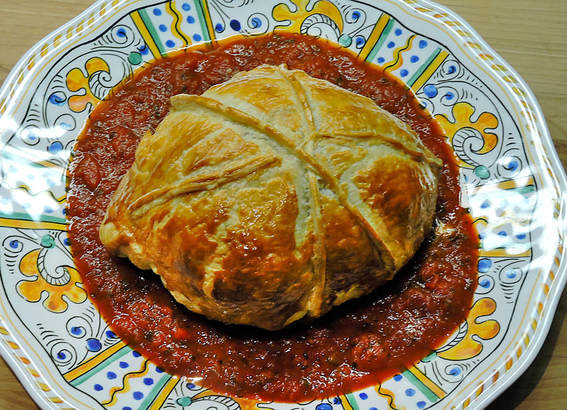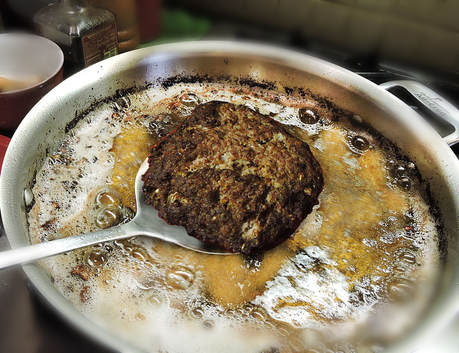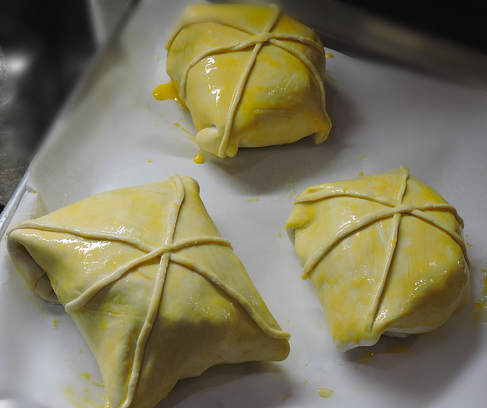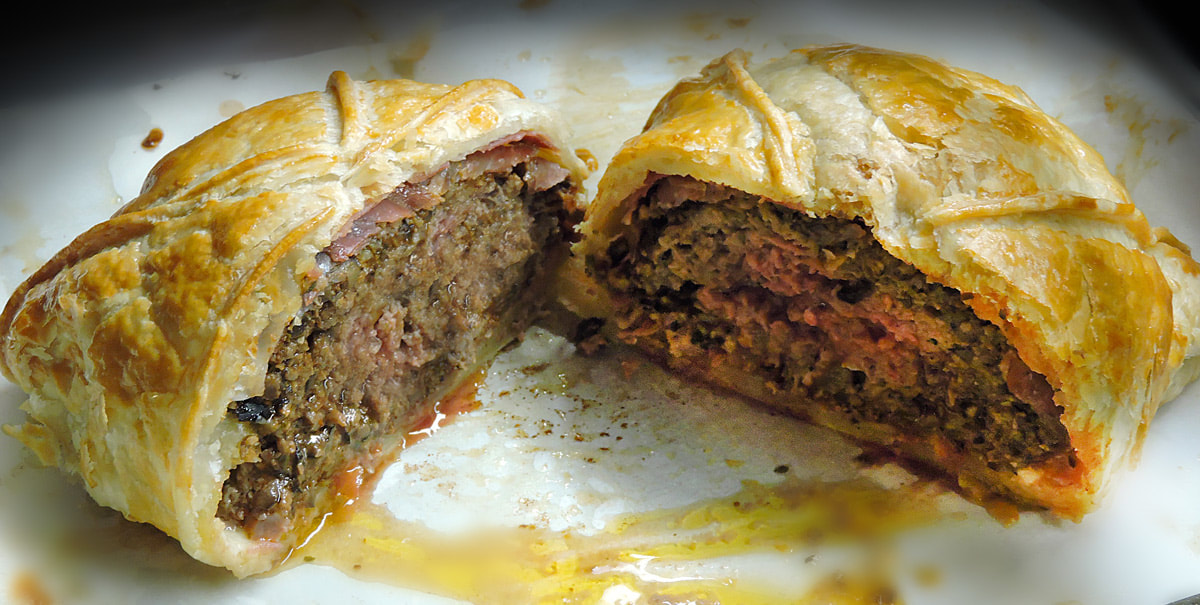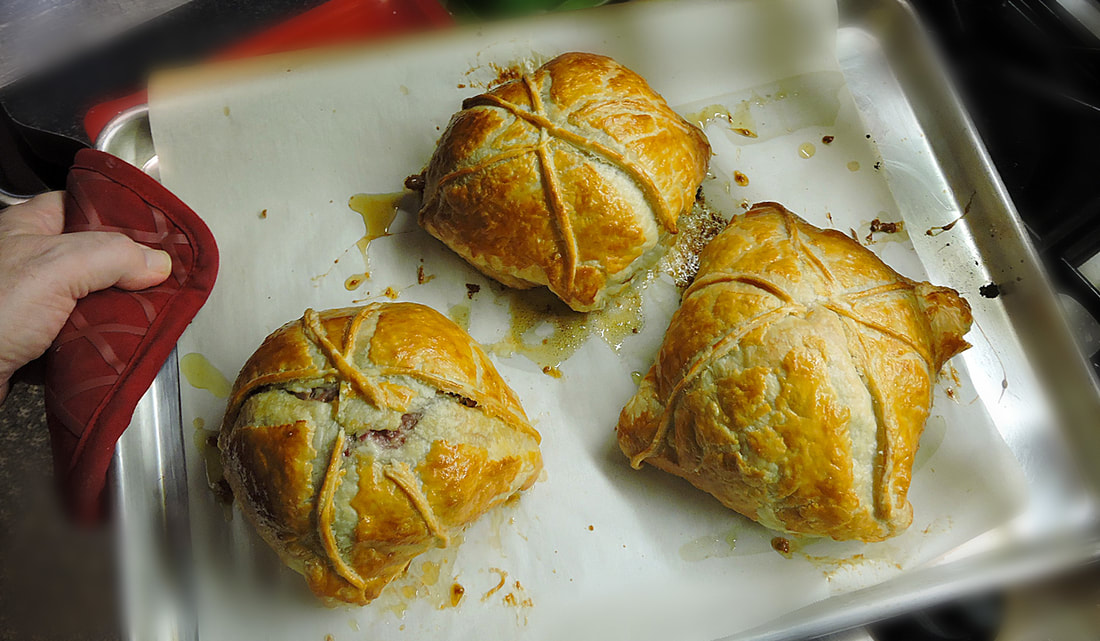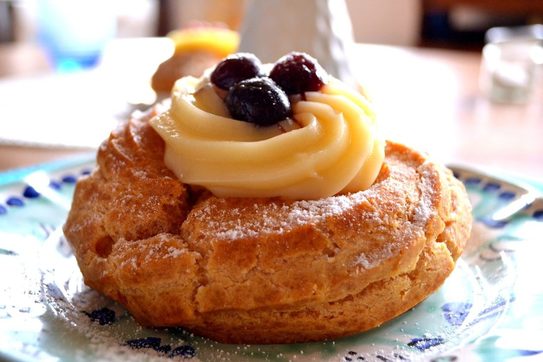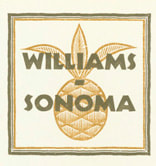|
by Jerry Finzi For Valentine's Day, my wife treated us to a Beef Wellington dinner, prepared and delivered by a local chef. Even though she got rave reviews, we weren't really Wow'd. Having had Wellington in the past, I knew that there were a few things lacking... The cut of beef wasn't tender enough, the mushroom duxelle was a bit funky tasting, and it was missing a wrap of Parma ham inside the (greasy) pastry. Thinking I could do better, I started thinking... and thinking... Why not transform the Wellington into an Italian version? The idea was to design a recipe similar to Beef Wellington... but instead of using a tender loin steak inside, it would be a large, flattened Italian style polpette (meatball), wrapped in prosciutto and provolone cheese with an black olive/pesto Tapinade just inside the puff pastry. There are similar recipes in Italy called Polpettone in Crosta, but these are loaf-size meatloafs, often stuffed with hard boiled eggs or other ingredients. I wanted mine to remain a Polpette--a true meatball... I set out to make my Polpette alla Wellington! 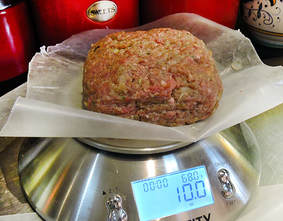 Each polpette weighed about 10 ounces Each polpette weighed about 10 ounces Ingredients for the Polpette 2 pounds ground chuck 1 medium Vidalia, small dice 1 egg 2 tablespoons red wine 1/3 cup finely grated Parmigiano Reggiano 1-1/4 cup breadcrumbs 1 teaspoon dried sage 1 tablespoon sea salt 1 teaspoon dry thyme 1 tablespoon dried basil 15 cracks black pepper (from a pepper-mill) 1 cup canola oil + 2 tablespoons olive oil for frying for the Tapinade 1 - 16 ounce can of black olives, well drained 2 tablespoons tomato paste 2 tablespoons pesto (from jar or Make it Fresh) 3 cloves fresh garlic, chopped 1/4 teaspoon red pepper flakes for the Pastry Wrap 4-6 slices delicatessen sharp provolone 1/4 pound prosciutto, speck or Boar Head Brand Piccolo Prosciutto 2 packages frozen puff pastry (butter or shortening type, your choice) 1 beaten egg (for egg wash) 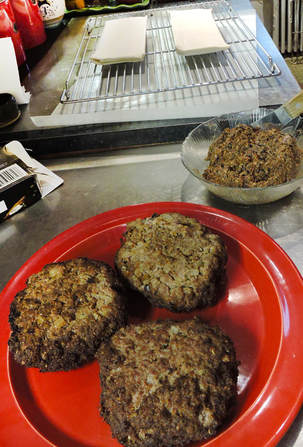 Directions
Frying the Polpette
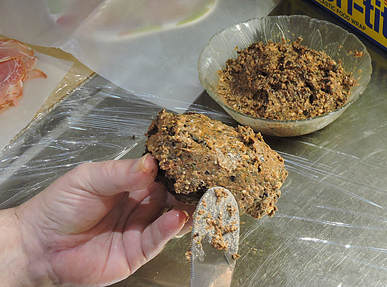 Coating the polpette with Tapinade Coating the polpette with Tapinade Making the Tapinade Next, to make the Tapinade, drain the olives and place into a food processor along with the pesto, tomato paste, garlic, red pepper flakes and Reggiano. Pulse several times to get a spreadable texture... but not too smooth. You might have to scrape down the sides of the mixer between pulses. Assembling the Wellingtons
You can serve your Polpette alla Wellington over a bed of marinara, as we did for one meal, but to be honest, we thought the tomato sauce masked some of the flavors. Also, even though I made the size of our polpette match the size of most beef tenders used to make a traditional Wellington, we felt the serving was too large. If we make this again, we would serve as we did for our second "leftover" meal--each serving was one-half a Wellington.
In fact, the second meal we served with a side of Italian flat beans and no tomato sauce. We actually enjoyed this meal much better... the Tapinade's flavors came to the forefront and the spices in the polpette were obvious. The half-sized servings were a perfect portion. I actually thought that 2 days later, after setting up in the fridge, wrapped in foil, the flavors melded and intensified a bit. We re-heated the leftover halves in loosely wrapped foil for one hour. If we make this recipe again, we will make smaller Polpette so each person can have a completely pastry-wrapped Wellington. Enjoy this recipe and let us know how yours turned out! © GVI 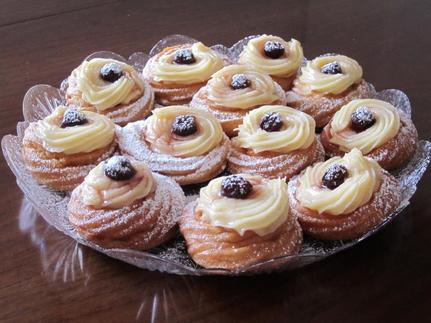 Ingredients For the Custard
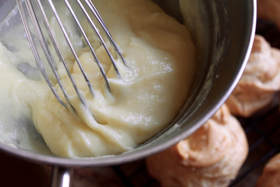 Directions Custard Cream
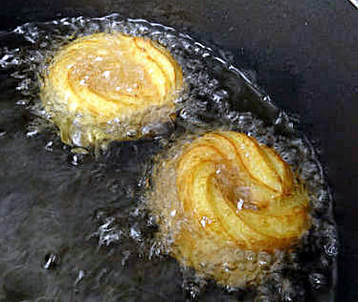 Zeppole
Buon appetito! --Jerry Finzi |
Archives
July 2023
Categories
All
|

